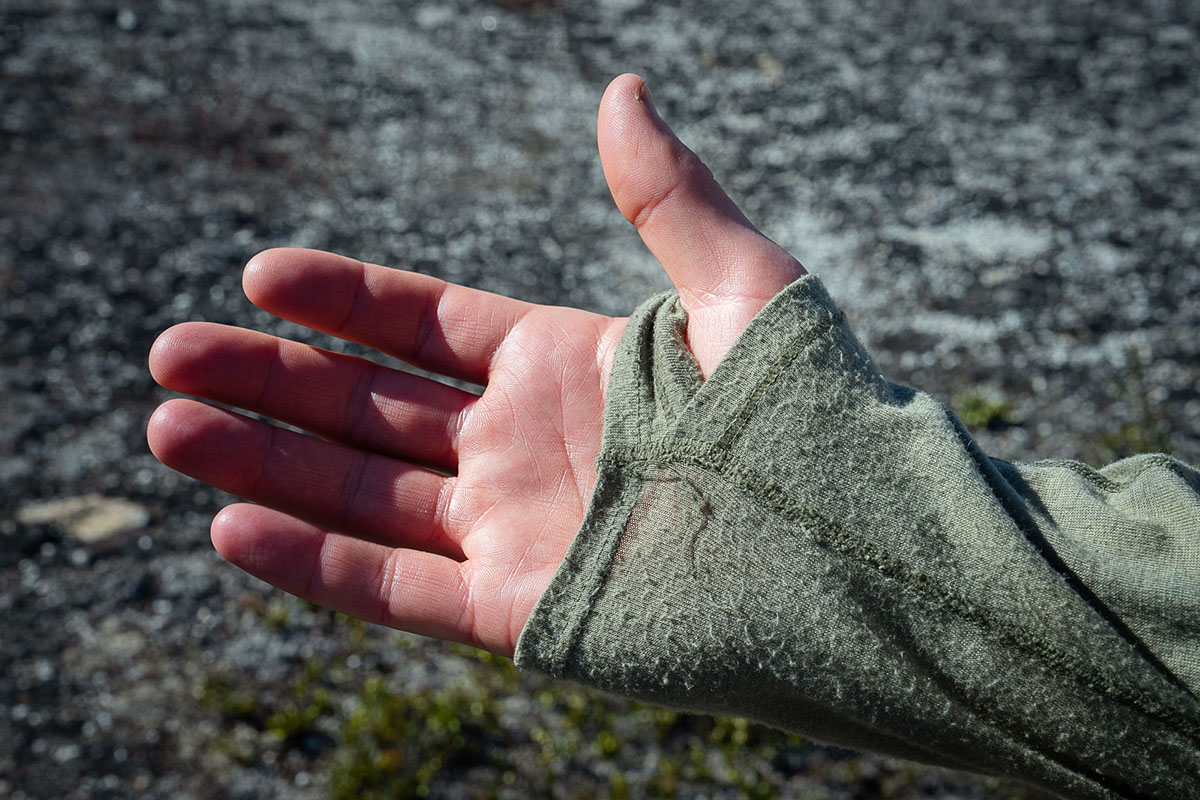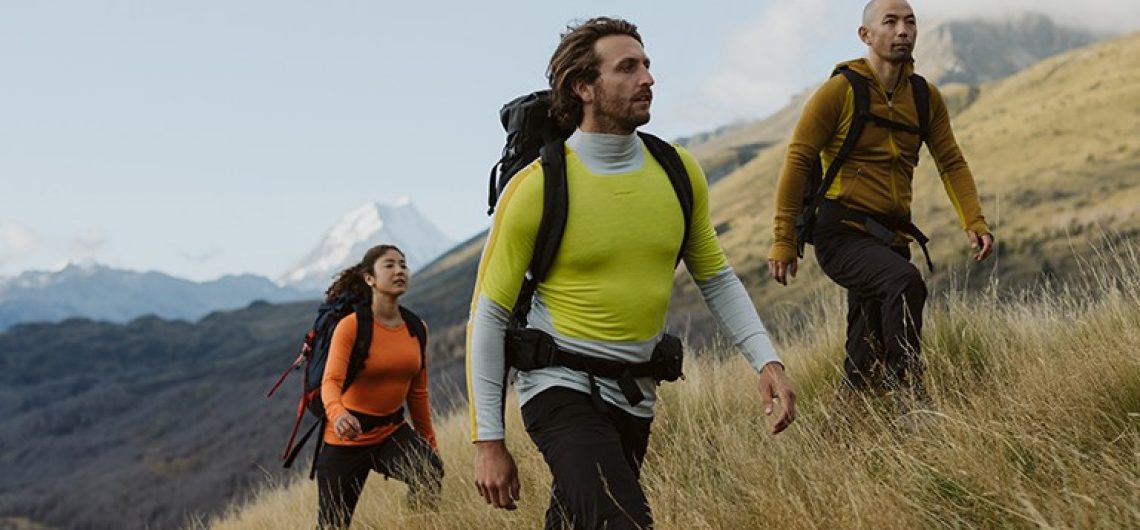The best and recommended base layers for trekking Kilimanjaro should be insulating, breathable and above all, comfortable. Embarking on the journey to summit Mount Kilimanjaro requires not just physical preparation but also the right gear to tackle the mountain’s diverse climate zones. Among the essentials, choosing the appropriate base layers and hiking shirts stands paramount.
Since hiking shirts are composed of unique materials intended for outdoor use, they differ from regular clothing in terms of breathability, moisture-wicking properties, and durability. These specialized features help hikers stay comfortable and protected during their outdoor adventures. Features on these shirts ensure your comfort when engaging in outdoor activities such as climbing Mount Kilimanjaro or trekking through the rainforest for days on end. The moisture-wicking properties also help to regulate body temperature and prevent chafing, making hiking shirts an essential piece of gear for any outdoor enthusiast.
Here’s an in-depth look at what you need to know to stay comfortable, dry, and protected on your ascent.
What is a Base Layer?
A base layer is the first clothing layer you wear directly against your skin. While often thought of for the upper body, base layers can also refer to leggings or tights for the lower body. For climbers of Kilimanjaro, we focus on the top layer – your hiking shirt. This layer is crucial as it manages moisture, provides insulation, and protects from the sun.
The Importance of Base Layers:
- Moisture Management: The primary function of any base layer is to wick sweat away from your skin, keeping you dry. This is vital because staying dry means staying warm, reducing the risk of hypothermia.
- Insulation: While base layers provide some warmth, their main role in insulation is to work with other layers to trap body heat.
- Protection: Sun exposure at high altitudes can be intense. A good base layer can offer UV protection and reduce the risk of sunburn.
Material Matters when choosing Base Layers:
When choosing a base layer, the material is crucial. The best options are usually polyester blends or merino wool, both of which wick moisture and dry quickly. Merino wool is soft, breathable, and naturally odour-resistant, though it’s more expensive. Avoid cotton because it absorbs sweat but dries slowly, making it a poor choice for hiking.
Choosing the right material for your base layer can make a significant difference:
- Synthetic Fabrics (Polyester and Blends):
- Pros: Excellent moisture-wicking, quick-drying, durable, and often more affordable.
- Cons: Can retain odors over time, although many modern versions are treated to combat this.
- Merino Wool:
- Pros: Naturally insulating even when wet, breathable, soft against the skin, naturally odor-resistant.
- Cons: Generally more expensive, can take longer to dry than synthetics but still dries relatively quickly.
- Why Avoid Cotton?: Cotton absorbs moisture and holds onto it, leading to a chilling effect when you stop moving, which is particularly dangerous in cold climates. It’s the antithesis of what you want in a base layer for climbing.
Base Layer Weight:
Base layers come in different thicknesses, called weights. Lightweight base layers are usually the best for Kilimanjaro because they wick moisture well and dry quickly. Thicker base layers trap more heat but don’t wick as efficiently. You can always add more warmth by layering with other clothing, like a fleece jacket.
- Lightweight: Best for Kilimanjaro due to its versatility. It’s breathable, dries quickly, and excels at moisture wicking. It’s ideal for the varying conditions you’ll face, from warm days to cooler nights.
- Midweight: Offers more warmth but might be too insulating for active climbing unless layered properly.
- Heavyweight/Expedition Weight: Too warm for most, potentially leading to overheating. Better suited for extremely cold, static conditions.
Fit and Coverage:
For a base layer to work properly, it should fit snugly so it can wick moisture from your skin. Loose-fitting shirts won’t work as well. Long sleeves offer better protection from the sun and wind, and hooded shirts are a great choice for covering your head and neck.
- Fit: Base layers should be snug but not constrictive. A close fit ensures effective moisture transfer from your skin to the outer layers.
- Coverage: Long sleeves are preferred for maximum protection. Consider hooded options for additional coverage of your head and neck, which are great for sun protection and added warmth.
Style and Features:
- Crew Neck: Common and functional but offers less temperature regulation.
- Quarter Zip/Half Zip: These are ideal for climbers as they allow for quick adjustments to airflow, helping regulate body temperature during varying intensity of activity.
- Thumb Holes: Featured in some modern designs, they keep the sleeves in place and can provide warmth for your hands.
Practical Tips for Kilimanjaro:
- Layering: Your base layer is just the beginning. Combine it with a mid-layer (like a fleece or softshell jacket) and an outer layer (your waterproof and insulated jackets) for the most effective protection against Kilimanjaro’s weather.
- Sun Protection: Even in cooler weather, UV rays are strong. Look for shirts with built-in UPF ratings or wear long sleeves and use sunscreen on exposed skin.
- Breathability: Ensure your base layer can handle the sweat from high exertion to prevent feeling cold when you rest.
- Versatility: Since conditions change, having a base layer that can work in both cooler and warmer conditions is beneficial. This reduces the need to carry multiple shirts.
Choosing the best base layers:
 Your journey up Kilimanjaro is both a physical and gear challenge. The right base layers and hiking shirts are not just about comfort; they’re about safety and efficiency. By selecting moisture-wicking, appropriately weighted, and well-fitted garments, you’re setting yourself up for a more enjoyable and successful climb. Remember, every piece of clothing you choose should enhance your ability to adapt to the mountain’s whims, keeping you dry, warm, or cool as needed. Equip wisely, and the mountain’s summit will not just be a dream, but a reachable goal.
Your journey up Kilimanjaro is both a physical and gear challenge. The right base layers and hiking shirts are not just about comfort; they’re about safety and efficiency. By selecting moisture-wicking, appropriately weighted, and well-fitted garments, you’re setting yourself up for a more enjoyable and successful climb. Remember, every piece of clothing you choose should enhance your ability to adapt to the mountain’s whims, keeping you dry, warm, or cool as needed. Equip wisely, and the mountain’s summit will not just be a dream, but a reachable goal.
Here are five top brands known for their excellent base layers and hiking shirts:
- Patagonia – Known for high-quality, durable, and eco-friendly outdoor gear, their base layers, like the Capilene series, offer excellent moisture-wicking and breathability.
- Smartwool – Famous for its Merino wool base layers, Smartwool is known for soft, comfortable, and temperature-regulating fabrics that are also naturally odor-resistant.
- Arc’teryx – A premium brand known for high-performance gear, Arc’teryx offers lightweight and breathable base layers ideal for mountain and alpine adventures.
- Icebreaker – Specializing in Merino wool, Icebreaker provides excellent moisture-wicking, warmth, and breathability with a focus on sustainability.
- Under Armour – Known for their synthetic base layers, Under Armour offers affordable, moisture-wicking, and durable options for both warm and cold conditions.
Types of Base Layers
You can choose between crew neck, quarter zip, or half zip base layers. Zip-up options allow you to adjust ventilation, making it easier to regulate your temperature as you climb. “Monkey thumbs,” or thumbholes in sleeves, can also add extra coverage for your hands.
For your Kilimanjaro climb, pick high-quality gear to stay comfortable and safe on the mountain.
![]()


Comments